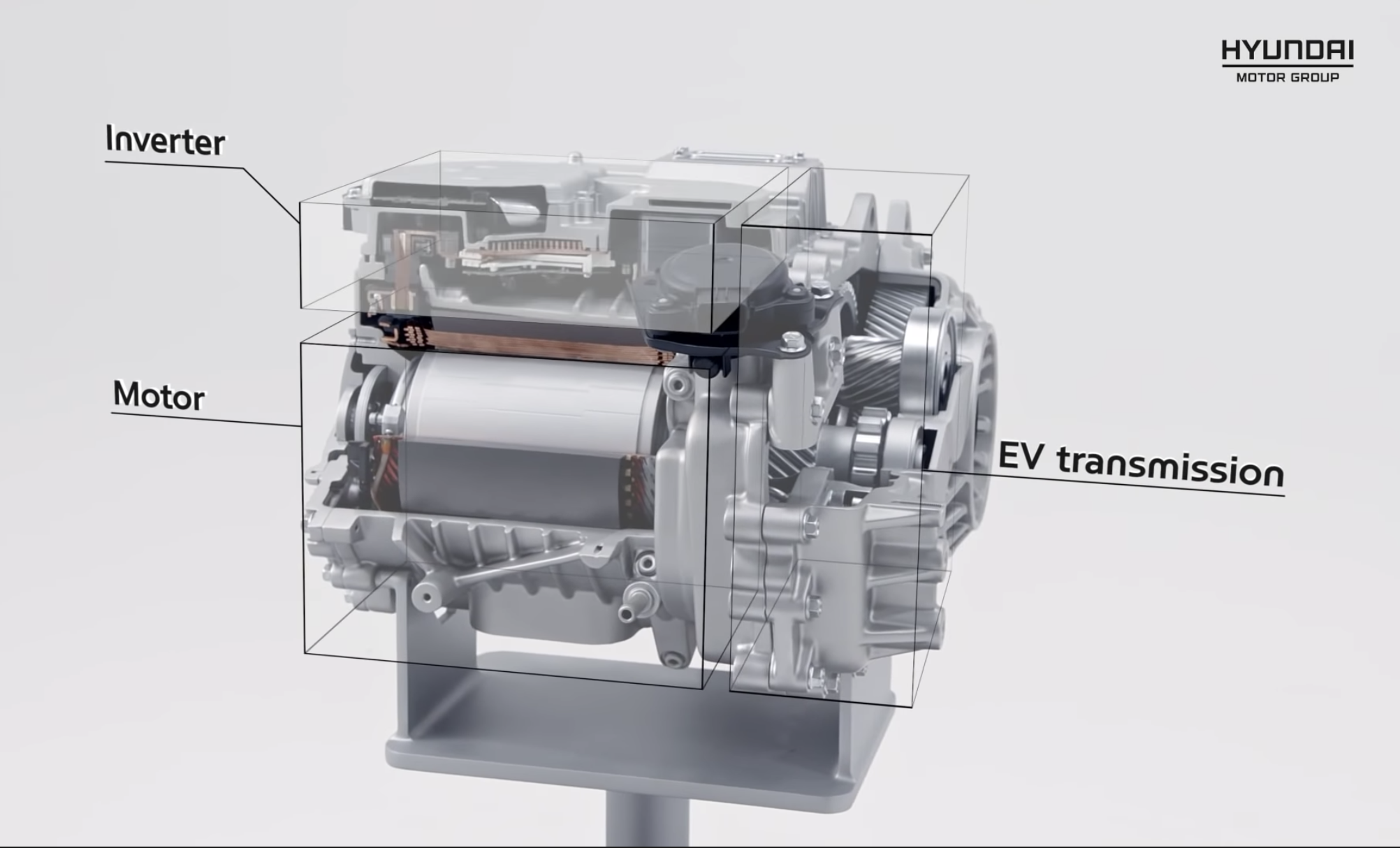

Manufacturers can technically “electrify” vehicles by swapping out the internal combustion engine for electric parts. But, that strategy doesn’t allow them to take full advantage of what EVs have to offer. To avoid that trap, Hyundai built its new Electric Global Modular Platform—or E-GMP—from scratch and it plans to start rolling out vehicles based on it next year.
The E-GMP platform made its debut during a press conference earlier this week in which the company laid out the ambitious plans it has to move toward electrifying its fleet. It’s a modular system that uses standardized parts in different configurations to meet the needs of specific use cases, from larger family vehicles to sports cars that can do 0-60 mph in less than four seconds.
A small electric motor plays a key role in the system. Despite its lack of size, the motor spins up to 70 percent faster than some of its larger competitors, which allows it to achieve the same kind of power and efficiency while taking up less space.

The platform is all-wheel-drive by default, but can shift into rear-wheel-drive and rely solely on the more powerful rear motor. An actuator wheel on the motor can automatically connect to or disconnect from the drive shaft to make the switch and increase overall driving efficiency.
The batteries providing the power are pouch-type cells arranged in reinforced steel enclosures. Hyundai claims they can charge at a typical 400V, or a high-speed 800V rate, which would provide a full charge in just 18 minutes (offering 62 miles of range) after five minutes on the cord. The system is bidirectional, too, so it can pump out enough energy from its battery packs to power a small campsite or work as a simple generator during a power outage. It could even output electricity to power another EV if the necessity arose.
As with other EV platforms, the battery array sits low to the ground to provide better handling. But, Hyundai has also surrounded that potentially volatile brick of batteries for protection during a crash.
The entire front of the car in front of the cabin is a crumple zone designed to absorb the impact in a crash before the energy can make its way to the cells. Without a big combustion engine sitting in front of the driver, Hyundai has been able to build in structures that redistribute force to cause less damage in a wreck. There’s a crossbar that spans the front of the vehicle and connects the sides of the engine bay to prevent deformation in off-center impacts, which are some of the most common and dangerous.
The smaller engine and drivetrain also make more room inside the cabin. The vehicles will have longer wheelbases with shorter overhangs, which means the steering wheel and pedals can come forward, and there’s no hump down the center of the cabin to accommodate the drivetrain. That’s part of what makes those boxy, spacious electric vehicle concepts we see so often possible.
Hyundai plans to start rolling out vehicles on the E-GMP platform starting next year, with dozens in the works. Because the platform is made up of standardized modules, the company says it can move quickly and adapt to market demands with differing styles and models. Maybe we’ll finally get that spacious rolling living room so many concept vehicles have promised us for years now.
